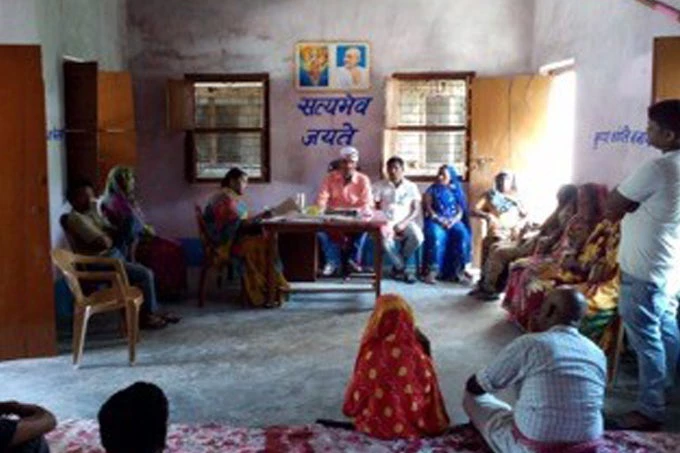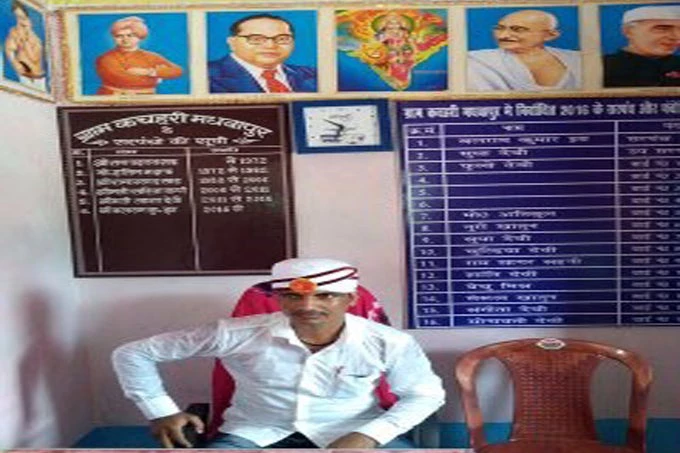
In June 2017, a long-running land dispute was settled in just six days in a community-owned court in Bihar.
Returning to his village after many years, Ramashish had received a rude shock. His cousins had deprived him of the 5.90 acres of land he’d inherited. Over the last 20 years, Ramashish had approached villagers, policemen, and civil court judges to resolve the dispute, but without much luck. Ultimately, Ramashish approached Pushpanjali Singh, the woman Sarpanch (head of the village) of the Wari Panchayat.
This was no easy case, but Pushpanjali summoned the 3 disputing parties — Ramashish and his cousins’ descendants — to the Gram Katchahri (Village Court - a judicial forum for resolving disputes locally). Pushpanjali helped the parties realize how much money they were wasting on their legal squabbles, and convinced them to withdraw their cases against each other. With the help of her husband, she measured the disputed property and allocated plots to each party. After 6 days, the parties agreed to her proposal.
Though this case might be one of Pushpanjali’s more recognized achievements, she has settled more than 100 cases over the last two years. While ensuring speedy justice, Pushpanjali is known by the locals as a fair Sarpanch
Unique as the Bihar Gram Katchahri might seem, it is intimately related to the Gram Panchayat, the oldest system of local government in India. “Panchayat” means “assembly” (ayat) of five wise and respected elders (panch) chosen and accepted by a village.
Traditionally, these Panchayats settled disputes between the villagers. But before India’s independence, a provincial government in Bihar set up five experimental Gram Katchahris to complement the existing Gram Panchayats. Then at the time of India’s Independence in 1947, the Gram Katchahri were recognized by statute[1] and more recent statutes[2] solidified their status. The common feature underlining all the legislation is to echo villagers’ demands: Gaonka samasya gao me netaiye (let’s village’s problems be settled in the village itself).
The Panchayat Raj Act of 2006 introduces innovative, unique features to the Gram Katchahri. The modern Gram Katchahri is a rural dispute resolution forum headed by a Sarpanch (head of the village) and comprised of four Panches (members), all elected by the villagers of a Panchayat. To help the forum understand and implement its own rules and powers, it is supported by a law graduate[3] and volunteers[4]. However, in practice, not all these forums function as well as Pushpanjali’s. The police have often taken over the powers of non-functional Gram Katchahris, causing the Bihar Police to issue an order in 2012 restricting all local police stations from interfering. After these developments, the Sarpanches have been enjoying full legality over their powers and developing better ways of coordinating with the police. As of today, the State of Bihar has set up 8,386 Gram Katchahris. There are 8,386 elected Sarpanches and 114,000 elected Panch.
The success of Gram Katchahris can be measured by their stability, the extent of their use by local communities, and their ability to dispense justice with sensitivity to local social conditions. This makes them worthy of consideration. That said, though they have been remarkably effective in delivering their mandate, numerous obstacles continue to exist, such as the bureaucracy and the lack of resources. One of the biggest challenges so far has been to provide Gram Katchahris with an official address due to the lack of their own buildings. In some instances, the Gram Katchahris conduct their proceedings in the house of a powerful Panchayat member.
The World Bank, through its ongoing Bihar Panchayat Strengthening Project, has been supporting the construction of independent office buildings for Gram Panchayats, with exclusive blocks to be used for Gram Katchahris. This would encourage even the weakest person to freely approach the “People’s Court,” and the inexpensive dispensing of justice at their doorsteps.
But there’s more to the Project than just the construction of buildings. It supports a strong partnership with the Chanakya National Law University to train all members of the Gram Katchahris (Sarpanches, law graduates, and volunteers) to empower them on their current functions, and train them on alternative dispute resolution techniques and tools.
All these Project interventions are aimed at assisting the Gram Katchahris to emerge as key instruments of community-owned justice, thereby easing the burden on the state’s justice system.




Join the Conversation